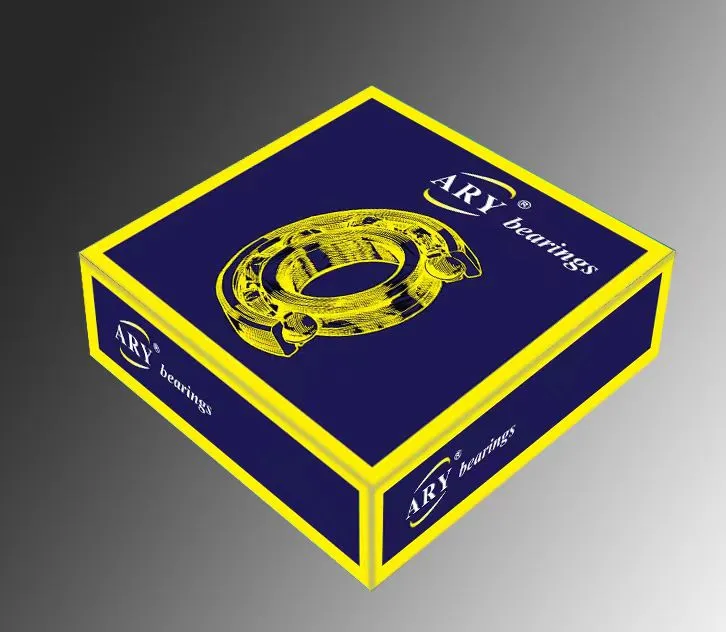
9 月 . 30, 2024 20:49 Back to list
Exploring Double Row Angular Contact Bearings for Enhanced Performance and Durability
Understanding Double Row Angular Contact Ball Bearings
When it comes to mechanical components and machinery, bearings play a critical role in ensuring smooth motion and operational efficiency. Among the various types of bearings available, double row angular contact ball bearings are particularly noteworthy due to their unique design and versatile applications. This article delves into the features, advantages, applications, and considerations of double row angular contact ball bearings.
Features of Double Row Angular Contact Ball Bearings
Double row angular contact ball bearings consist of two rows of balls arranged at an angle relative to the axis of rotation. This design allows them to accommodate axial loads coming from both directions, making them an ideal choice for applications that experience combined load conditions. Key features of these bearings include
1. High Load Capacity Due to their configuration, double row angular contact ball bearings can support both radial and axial loads effectively. The arrangement of the inner and outer races contributes to the increased contact area, enhancing load distribution.
2. Angular Contact Design The raceways of the inner and outer rings are inclined at a certain angle, allowing the bearing to handle higher speeds compared to standard radial bearings. The angle of contact supports thrust load in addition to radial loads, providing versatility in applications.
3. Compact Structure The two-row arrangement allows for a more compact design in applications where space is constrained. This compactness is beneficial in various engineering and mechanical systems.
4. High Precision These bearings are manufactured to high standards, ensuring they exhibit low noise and vibration levels, resulting in enhanced precision and reliability in operation.
Advantages of Double Row Angular Contact Ball Bearings
The adoption of double row angular contact ball bearings in machinery and industrial applications comes with several advantages
1. Robust Performance These bearings are designed to handle extreme conditions, making them suitable for high-load applications where reliability is paramount.
2. Reduced Maintenance With their robust nature and ability to handle combined loads, maintenance requirements are minimized, which translates to lower operational costs and increased uptime.
3. Versatility Their capability to manage both radial and axial loads makes them versatile for use in a myriad of applications, from automotive and aerospace to manufacturing and heavy machinery.
4. Enhanced Stability The dual-row design provides extra stability during operation, reducing the risk of failure under stress.
double row angular contact

Applications of Double Row Angular Contact Ball Bearings
Given their functionalities, double row angular contact ball bearings find applications across various industries
1. Machine Tools In the CNC and machining sectors, these bearings are crucial for spindle applications where high accuracy and load handling capacity are necessary.
2. Electric Motors They are often used in electric motors where high speeds and reliability are essential for performance.
3. Automotive Applications In automotive engineering, these bearings support wheel hubs and transmission systems, facilitating smooth movement and enhancing vehicle performance.
4. Aerospace The lightweight and sturdy nature of these bearings makes them suitable for aerospace components, ensuring safety and reliability during flight.
5. Robotics Precision is vital in robotics, and double row angular contact ball bearings help maintain the necessary alignment and load distribution for robotic arms and other mechanisms.
Considerations When Using Double Row Angular Contact Ball Bearings
While double row angular contact ball bearings offer numerous benefits, engineers and manufacturers should consider a few factors
1. Load Direction Understanding the direction of loads in the application is crucial for selecting the right bearing configuration. Correct alignment ensures optimal performance and lifespan.
2. Lubrication Appropriate lubrication is essential to reduce friction and wear over time, impacting the longevity and effectiveness of the bearings.
3. Environmental Factors Bearings exposed to extreme temperatures or contaminants may require special materials or seals to maintain their integrity.
Conclusion
Double row angular contact ball bearings are a vital component in modern machinery, offering reliability, versatility, and efficiency across multiple applications. By understanding their features and advantages, engineers can make informed decisions regarding their use in various systems, ensuring optimal performance and longevity. As industries continue to evolve and demand more advanced technology, the role of these bearings will undoubtedly remain significant in achieving greater efficiency and precision in mechanical operations.
Latest news
-
Unlocking Efficiency with Spherical Roller Bearings
NewsOct.29,2024
-
The Ultimate Guide to Thrust Ball Bearings
NewsOct.29,2024
-
The Power of Thrust Roller Bearings: Engineered for Excellence
NewsOct.29,2024
-
The Power of Deep Groove Ball Bearings for Your Application Needs!
NewsOct.29,2024
-
The Power and Performance of Cylindrical Roller Bearings
NewsOct.29,2024
-
High-Quality Ball Bearing Manufacturing Machines
NewsOct.29,2024
